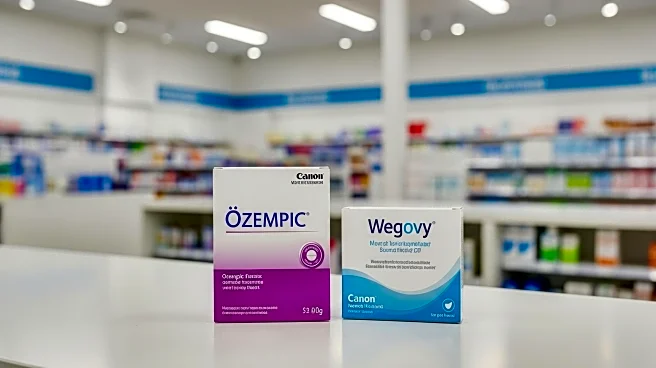What's Happening?
A growing trend known as 'fibermaxxing' is gaining attention among nutrition experts as a means to address the widespread deficiency of fiber in the American diet. According to Eliza Whitaker, founder and registered dietitian at Nourished Nutrition and Fitness, the standard American diet is notably lacking in fiber, with an estimated 95% of U.S. adults and children not meeting the recommended daily intake. Fibermaxxing encourages individuals to increase their fiber consumption through foods like flaxseeds, beans, nuts, and fruits, aiming to improve digestive health, promote fullness, and aid in weight loss. Meal delivery services are responding to this trend by offering high-fiber meal plans. However, experts caution that while increasing fiber intake is beneficial, it should be done gradually to avoid gastrointestinal discomfort.
Why It's Important?
The emphasis on fibermaxxing highlights a critical gap in the American diet that has significant health implications. Fiber plays a vital role in maintaining gut health, regulating blood sugar levels, and lowering cholesterol. Its deficiency is linked to rising rates of colorectal cancer among young adults, a major concern given its status as the third leading cause of cancer death in the U.S. Increasing fiber intake can reduce the risk of chronic diseases such as Type 2 diabetes and cardiovascular disease. For those focusing on heart health, gut health, or weight management, a fiber-rich diet offers substantial benefits. However, individuals with certain medical conditions should consult healthcare professionals before significantly altering their fiber intake.
What's Next?
As the fibermaxxing trend continues to gain traction, it is likely to influence dietary guidelines and consumer behavior. Nutrition experts may advocate for more public awareness campaigns to educate the population on the importance of fiber. Food companies and meal delivery services might expand their offerings to include more high-fiber options, catering to the growing demand. Additionally, healthcare providers may increasingly incorporate fiber intake assessments into routine check-ups, especially for patients at risk of chronic diseases. The trend could also spark further research into the long-term health benefits of fiber-rich diets.
Beyond the Headlines
The fibermaxxing trend underscores broader societal shifts towards healthier eating habits and preventive healthcare. It reflects a growing awareness of the role diet plays in overall health and the prevention of chronic diseases. This movement may also influence agricultural practices, with increased demand for high-fiber crops potentially impacting farming strategies and food supply chains. Furthermore, the trend highlights the importance of personalized nutrition, as individuals with specific health conditions must tailor their fiber intake to avoid adverse effects.










